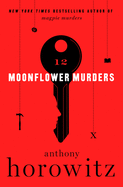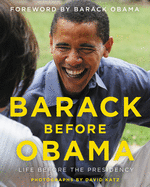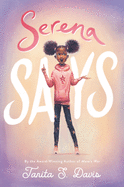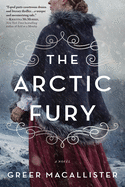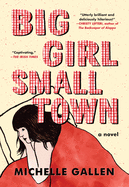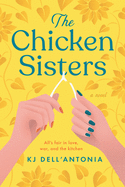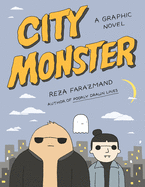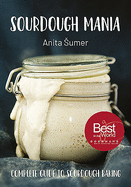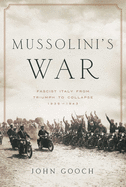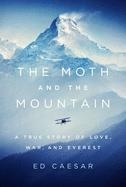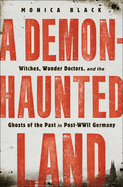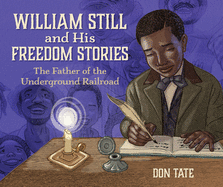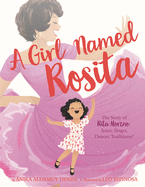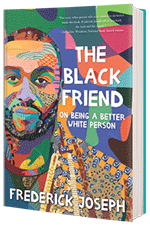Friday, December 4, 2020
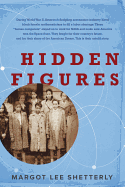 The female mathematicians of NASA, many of them Black, made vital contributions to the U.S. space program. Margot Lee Shetterly gave their stories a huge boost in her blockbuster book, Hidden Figures (Morrow, $17.99), which inspired a hit film. But women have been making standout contributions in STEM fields for decades, and their stories take both fictional and nonfictional forms.
The female mathematicians of NASA, many of them Black, made vital contributions to the U.S. space program. Margot Lee Shetterly gave their stories a huge boost in her blockbuster book, Hidden Figures (Morrow, $17.99), which inspired a hit film. But women have been making standout contributions in STEM fields for decades, and their stories take both fictional and nonfictional forms.
 Computer scientist Cecilia Rodriguez Aragon spent her early life and career believing she wasn't good enough. When a colleague's love of flying inspired her to become a licensed pilot, Aragon still wrestled with insecurity and fear (not to mention constant sexism at airfields and airshows). Her memoir, Flying Free (Blackstone, $26.99), chronicles her journey to become the first Latina to compete on the U.S. Unlimited Aerobatic Team.
Computer scientist Cecilia Rodriguez Aragon spent her early life and career believing she wasn't good enough. When a colleague's love of flying inspired her to become a licensed pilot, Aragon still wrestled with insecurity and fear (not to mention constant sexism at airfields and airshows). Her memoir, Flying Free (Blackstone, $26.99), chronicles her journey to become the first Latina to compete on the U.S. Unlimited Aerobatic Team.
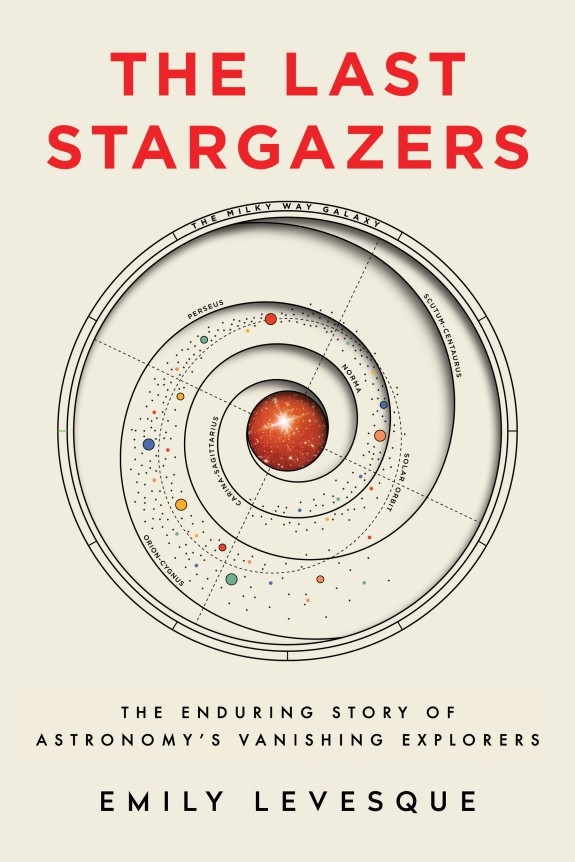 In her witty, fascinating memoir, The Last Stargazers (Sourcebooks, $25.99), astronomer and "weird star enthusiast" Emily Levesque takes readers on a tour of the observatories where she has worked and explains why humans should continue studying the night skies. She charts the challenges and joys of nocturnal observation and shares the frustrations of being a woman in a male-dominated field.
In her witty, fascinating memoir, The Last Stargazers (Sourcebooks, $25.99), astronomer and "weird star enthusiast" Emily Levesque takes readers on a tour of the observatories where she has worked and explains why humans should continue studying the night skies. She charts the challenges and joys of nocturnal observation and shares the frustrations of being a woman in a male-dominated field.
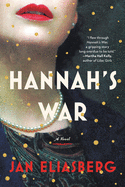 Novelists Jennie Fields (Atomic Love, Putnam, $26) and Jan Eliasberg (Hannah's War, Back Bay, $16.99) were inspired by the contributions of female scientists during World War II. Their stories--Fields's is set in Chicago, Eliasberg's in Berlin and Los Alamos, N.Mex.--each follow a brilliant but underappreciated female physicist at the dawn of the nuclear age. Both authors sensitively explore the sacrifices their protagonists make to have fulfilling careers, as well as their complicated relationships with male colleagues and their constant struggle to be taken seriously.
Novelists Jennie Fields (Atomic Love, Putnam, $26) and Jan Eliasberg (Hannah's War, Back Bay, $16.99) were inspired by the contributions of female scientists during World War II. Their stories--Fields's is set in Chicago, Eliasberg's in Berlin and Los Alamos, N.Mex.--each follow a brilliant but underappreciated female physicist at the dawn of the nuclear age. Both authors sensitively explore the sacrifices their protagonists make to have fulfilling careers, as well as their complicated relationships with male colleagues and their constant struggle to be taken seriously.
For these women, real and fictional, the joy of scientific accomplishment is impeded, but never eclipsed, by the sexism they face. Their stories are an inspiration--and we need more like them. --Katie Noah Gibson, blogger at Cakes, Tea and Dreams
The Arctic Fury
by Greer Macallister
In 1853 Boston, a wealthy Englishwoman, Lady Jane Franklin, secretly recruits experienced trail guide Virginia Reeve and a dozen other women for an all-female Arctic expedition. The women aim to find--or find out the fate of--Lady Jane's husband, Sir John, who disappeared in the Arctic with his men. A year later, Virginia is back in Boston and standing trial for murder. In her gripping fourth novel, The Arctic Fury, Greer Macallister (Woman 99; Girl in Disguise) weaves together two timelines and multiple narrative strands, exploring what happened on the women's brief expedition, and why several of them did not return.
Macallister tells her story chiefly from Virginia's point of view, bringing in her past experience as a trail guide in the American West and her complicated relationship with a fellow guide. But each of the women gets at least a chapter to tell her own story: artist Christabel, taciturn nurse Dove, officers' wives and dear friends Ebba and Althea, spoiled socialite Caprice. Things start going wrong even before the group leaves Boston, and Virginia must muster all her tact and courage to lead her ill-assorted crew to the far north.
The Arctic Fury is not for the faint of heart: at times Macallister thrusts her characters almost aggressively into hardship, peril and gruesome situations. It is not a clear-cut narrative of adventure, love or justice, although it contains the seeds of all those things. But it is certainly compelling. Readers who love historical fiction, strong women and unusual settings will find all three--as well as a couple of truly inventive twists--in Macallister's novel. --Katie Noah Gibson, blogger at Cakes, Tea and Dreams
Discover: Greer Macallister's compelling fourth novel follows an all-female Arctic expedition that ends in a murder trial.
Big Girl, Small Town
by Michelle Gallen
Michelle Gallen's debut novel, Big Girl, Small Town, offers an irreverent look into daily life in small-town Ireland as it follows its winning protagonist through a series of setbacks and new beginnings. Majella O'Neill spends her days working at the local chip shop and her nights curled up in her duvet watching Dallas. She hates most things (and most people), but especially small talk and gossip, the two activities that keep Aghybogey, a Northern Ireland town still haunted by the violence of the Troubles, running. Despite caring for her alcoholic mother and missing her absent father, Majella has settled into accepting what her life is going to be. That is, until her beloved grandmother is murdered and leaves her with the family farm.
Bawdy and bold, Big Girl, Small Town may focus on everyday activities, but its narrative voice, captivating protagonist and textured setting will keep readers eager to know what its eccentric cast of characters will do next. The novel's humor is dry, sometimes grotesque, and yet never at its characters' expense. Instead, a surprising sensitivity emerges from even its most brutal of jabs, making readers root for Majella no matter how she acts. Majella's own unspoken desire for more gives the novel its poignancy, particularly as the small opportunities to break free from the confines of her town and familial obligations mount. The novel's no-nonsense approach to feelings and the absurdities of existence prevent the story from ever falling into sentimentality or despair. --Alice Martin, freelance writer and editor
Discover: A pitch-perfect cynical dark comedy with an unexpected heart, Big Girl, Small Town will appeal to those looking for a grown-up Derry Girls with a literary edge.
The Chicken Sisters
by KJ Dell'Antonia
Comfort food and family feuds are centerpieces of the fun, first novel by KJ Dell'Antonia (How to Be a Happier Parent). The author plunges readers deep into the complicated lives of two families, the Moores and Pogociellos--rivals who share roots dating back to the 1800s in Merinac, Kan., where two sisters originated a fried chicken business. Familial tensions flowed through generations, down to Amanda Moore, who worked for her mother's traditional, old-school fried-chicken establishment, Chicken Mimi's--and fell in love with and married Frank Pogociello. Amanda's romantic choice created a mother-daughter rift that deepened when Amanda went to work for Chicken Frannie's, the competing restaurant offering a more innovative fried chicken menu.
With both eateries facing financial crises, Amanda reaches out to a reality TV show where two restaurants compete for a $100,000 prize. Once Amanda's pitch is accepted, it's game on for the fighting, frying families. Amanda enlists her widowed mother-in-law at the helm of Chicken Frannie's to battle against the Chicken Mimi's team: Amanda's estranged mother and Mae, Amanda's Brooklynite sister, who returns to Merinac after her successful TV career and marriage suddenly start to fray.
As the two eateries face off ruthlessly amid the limelight of TV cameras and producers eager to stir the drama pot, long-simmering family history infused with old resentments and scandalous secrets rises to the surface. Dell'Antonia's delightful story dishes up juicy messages about the strength and fortitude of the female spirit, the meaning of happiness and the valuable bonds of family. --Kathleen Gerard, blogger at Reading Between the Lines
Discover: A fun, lively story about the long-simmering rivalry between two legendary families that serve "the best" fried chicken in Kansas.
Mystery & Thriller
Moonflower Murders
by Anthony Horowitz
Anthony Horowitz (Magpie Murders; The Word Is Murder) has created an astoundingly clever mystery in Moonflower Murders. The book opens with Susan Ryeland, a former editor, who now runs a small hotel on Crete. She's approached by the Trehernes, a wealthy couple who are alarmed by the sudden disappearance of their daughter Cecily. Cecily had called to tell them she found a clue to a murder that took place at the family's exclusive hotel eight years earlier. She found this hint in a book by Alan Conway, a dead author whom Susan represented. Immediately after the phone call, Cecily disappeared.
The Trehernes have a proposal for Susan: come back to England, stay at their hotel, and see if there is a connection between Conway's book Atticus Pünd Takes the Case, the earlier murder and Cecily's disappearance. Susan needs the money, so she agrees.
The true brilliance of Moonflower Murders lies in its book-within-a-book status, as Susan rereads Atticus Pünd Takes the Case, looking for clues to her dual investigations: into the murder of a hotel guest named Frank eight years earlier and the recent disappearance of Cecily. Horowitz does an excellent job of layering clues within the fictional Pünd's investigation, which Susan in turn uncovers in her investigation and which will keep Horowitz's readers guessing until the very last page. Reminiscent of Agatha Christie, Ngaio Marsh and John Buchan, Moonflower Murders is golden age detective fiction at its finest. --Jessica Howard, bookseller at Bookmans, Tucson, Ariz.
Discover: In this intriguing book-within-a-book, an editor looks for clues in a mystery she edited to see if she can find the truth behind a real-life murder.
Graphic Books
City Monster
by Reza Farazmand
In Reza Farazmand's irreverent, read-it-in-one-sitting graphic novel, City Monster, a young forest monster relocates to the city so he can become the titular creature.
Finding purpose in the city has him stymied, but he becomes fast friends with others also facing a quest for self-discovery. His apartment comes with a marijuana-smoking ghost struggling to recall who he was as a human and the cause of his demise. Kim, City Monster's neighbor, is an introspective vampire. They often get together for coffee and wander the city discussing career options. During one outing, the two friends are taunted by Demon Bird, a self-proclaimed reflection of City Monster's inner critic, and a judgmental cat Kim swears is stalking her. Just as Kim is about to reveal the one big regret of her immortal life, she and City Monster spy Ghost entering a museum and follow him. They find Ghost floating near a painting of a famous Spanish king, which Ghost thinks is himself. The three are galvanized to discover the full story of Ghost's past, hoping that doing so will help them find their own paths.
City Monster's world is populated with absurdity so infectious that giggling and even snorting laughter may occur during reading. The pastel artwork is flat and quirky, showcasing unexpected details, and words are all caps. Narration floats freely within each frame, but dialogue settles nicely into word balloons. Profanity and drug mentions keep Monster from claiming a place as a preteen novel about finding one's way in life, so adults might care to keep it on a high shelf for themselves. --Paul Dinh-McCrillis, freelance reviewer
Discover: Absurdity and adult themes make this humorous graphic novel about a city monster something to be devoured.
Food & Wine
Sourdough Mania: Complete Guide to Sourdough Baking
by Anita Šumer
Bakers craving homemade sourdough bread will find an expert coach in Anita Šumer, Slovenian baker, teacher and author of Sourdough Mania. She boasts tens of thousands of followers on Instagram, and has traveled worldwide presenting workshops and spreading her passion for bread that "tastes incomparably better than bakes made with baker's yeast," and is healthier and more digestible.
"First of all, I advise you to give your mother starter a name, as this will make it easier to care for it: my 'Rudl' and I are inseparable," Šumer writes in her detailed directions for making starter (the fermentation element that replaces yeast) using just four ingredients: "flour, water, time and patience." She describes various flours, "locally sourced and organic when possible," noting their relative merits. European measurements and references may be daunting to a novice baker, but Šumer balances these with encouragements, and a lengthy "SOS" chapter of "What If's." She includes gluten-free recipes, too. Photo illustrations show the progress of a proper jar of starter, kneading techniques and the artistry of decorating loaves. Dozens of recipes beyond the classic round boule include baguettes, croissants and desserts, such as chocolate babka.
In addition to her workshops and online outreach, Šumer is an ambassador for the Sourdough Library in Brussels, home to 128 sourdough samples from 24 countries plus an online collection.
With the enthusiasm of an artist and the precision of a scientist, Šumer leaves little to chance, and readers can anticipate success as well as conversion to Sourdough Mania. --Cheryl McKeon, bookseller, Book House of Stuyvesant Plaza, Albany, N.Y.
Discover: A complete guide to making sourdough bread and baked goods, from starter to gorgeous loaf.
History
Mussolini's War: Fascist Italy from Triumph to Collapse: 1935-1943
by John Gooch
Mussolini's War: Fascist Italy from Triumph to Collapse: 1935-1943 is an accessible overview of fascist Italy's overambitious military ventures by John Gooch, a leading scholar on Italy and the two world wars. Gooch shows how Mussolini's dream of creating a new Roman Empire was doomed to fail for a variety of reasons--from poor leadership and an inadequate manufacturing base to the disastrous decision to ally with Nazi Germany. Mussolini's War is especially illuminating as a summary of the successes and failures of arguably the least of the Great Powers, whose role in World War II is often minimized or ignored by popular histories.
From the start, Gooch makes it clear that fascist Italy's territorial ambitions were at odds with the nation's capacities. While Italy's armies found early success in Ethiopia and Spain, they were unprepared for the scale and complexity of a modern world war. Mussolini's decision to ally with Nazi Germany dragged a poorly organized and underequipped military into conflict with much wealthier nations. Italy's overstretched armies were far from the only ones who suffered and died for Mussolini's dreams: Gooch explains how Italian occupations allowed devastating famine in Greece and genocide in former Yugoslavia.
Casual students of World War II might be used to narratives that present Italy as a bumbling, almost inconsequential participant. Gooch instead offers a nuanced account of overmatched and undertrained soldiers, who often fought bravely, being asked to succeed against impossible odds. Mussolini's dreams proved to be nothing more than costly delusions. --Hank Stephenson, the Sun magazine, manuscript reader
Discover: Mussolini's War is a comprehensive account of fascist Italy's military successes and failures, providing a useful, underexplored perspective on World War II.
The Moth and the Mountain: A True Story of Love, War, and Everest
by Ed Caesar
Readers in the mood for an eccentric adventure story will be captivated by journalist Ed Caesar's The Moth and the Mountain: A True Story of Love, War, and Everest, the fast-moving account of Englishman Maurice Wilson's doomed quest to scale the world's highest peak in 1934.
Considering Wilson's size in relation to the scale of his audacious project, the moth of Caesar's book title could have referred to the man himself, but instead it describes a Gipsy Moth biplane manufactured by the de Havilland Aircraft Company. While visiting Germany in 1932, Wilson--a World War I veteran--hatched his improbable plan to fly that aircraft some 5,000 miles from England to India, crash land the tiny plane at an elevation of 10,000 feet and then become the first man to ascend to the summit--alone.
Wilson's scheme would have been wildly ambitious for a seasoned aviator and skilled mountaineer, but considering that he had completed his flight training only a short time before he took off from England and hadn't climbed anything higher than some mountains in the country's Lake District and Wales, it bordered on the suicidal. Confessing to a near obsession with Wilson's story, and aided by the discovery of a cache of documents in the possession of his subject's septuagenarian great-nephew, Caesar is a deeply sympathetic biographer. Whether viewed as an inspiring tribute to one brave man's indomitable spirit, or a chronicle of sheer madness, what Caesar calls the "whole sorry, beautiful, melancholy, crazy tale" is one of truth that often seems far stranger than fiction. --Harvey Freedenberg, freelance reviewer
Discover: This is a vivid account of one early attempt to climb Mount Everest, a tale of adventure and madness.
A Demon-Haunted Land: Witches, Wonder Doctors, and the Ghosts of the Past in Post-WWII Germany
by Monica Black
The history of postwar West Germany is often simplified into one of triumphant renewal, with the former Nazi state reborn as a democracy that faced its past head-on. The reality is much more complicated, as history professor Monica Black explains in her revelatory A Demon-Haunted Land: Witches, Wonder Doctors, and the Ghosts of the Past in Post-WWII Germany. Black's history of postwar Germany focuses on the outbreaks of superstition and messianic religious belief that consumed the war-torn nation, including charismatic faith healers that drew crowds of thousands, predictions of the end of the world that dominated newspapers and even a rash of witchcraft accusations. Black argues that these outbursts were fueled by the sublimated guilt, shame and suffering of a society where many had committed or tolerated terrible crimes.
In contrast to the modern view of Germany as a nation that has reckoned with its history, postwar West Germans were eager to put it behind them and rebuild their nation. This necessitated a remarkable silence about the past on the part of many citizens, who would refer to the Nazi era only euphemistically. In the absence of a public reckoning, Black argues, many expressed themselves through superstition and fervent religion. Accusations of witchcraft exposed the rifts in communities where neighbor had turned against neighbor under the Nazis, for example, and the many faith healers that emerged seemed to heal spiritual injuries as often as physical ailments. Black's portrayal of postwar Germany as a morally and spiritually damaged nation is a fascinating and necessary corrective to popular redemption narratives. --Hank Stephenson, the Sun magazine, manuscript reader
Discover: A history professor explores the outbreaks of superstition and fervent religiosity in postwar Germany, arguing that they expressed the shame and guilt of a morally compromised nation.
Art & Photography
Barack Before Obama: Life Before the Presidency
by David Katz
David Katz's captivating, heartwarming and uplifting photo book Barack Before Obama selects more than 200 photos from the 900,000 shots Katz took between 2004 and 2008. The period covers Obama's 2004 Senate campaign, his time working in the Senate and his 2008 presidential campaign. Katz began as an unpaid intern and soon became Obama's personal photographer. The book concludes with images from the night Barack Obama became the 44th president of the United States.
The stunning photographs are supplemented with succinct paragraphs of background information by Katz and anecdotes collected from Obama's inner circle, including personal aide (or "body man") Reggie Love, campaign manager David Plouffe, sister Maya Soetoro-Ng, Michelle Obama's chief of staff Melissa Winter and others. Readers learn that Obama loved to play DJ for his campaign staff; Oprah Winfrey was so unimpressed with Obama's Chicago apartment that she conducted their first interview outside; Michelle joked with her husband to help him relax before debates; and Obama played online Scrabble with his sister during his entire presidency. But the real star of this book is the beautiful, crisp and vibrant photography that captures Obama and his family playing, laughing, campaigning and relaxing. Some of the most haunting images include Obama massaging his daughter Malia's neck as she draws with crayons and a single tear running down Obama's cheek after hearing that the grandmother who raised him has died.
Katz's impressive collection of photos and anecdotes is a charming and moving tribute to the four-year period where Obama's political career gained traction. --Kevin Howell, independent reviewer and marketing consultant
Discover: A mesmerizing and moving collection of photos and anecdotes covering four pivotal years in the life of Barack Obama and his family.
Children's & Young Adult
Serena Says
by Tanita S. Davis
In her seventh book for young readers, Coretta Scott King Award Honoree Tanita S. Davis (Mare's War) gives a genuine look at the confusing and sometimes painful changes that take place in middle school.
Sixth grader Serena St. John aspires to be a vlogger like her older sister, Fallon, and she has a lot to get off her chest this year. She's smarting from a rejection to be one of her homeroom's morning announcements reporters, and her best friend, JC, recently homebound after a kidney transplant, seems to have traded Serena in for a new model: cool girl Leilani Camacho. "It's not like Leilani isn't nice," and Serena has no reason to not like her, "none at all, except that it seems like JC likes her... more than me." All of a sudden Serena and JC's science projects, gossip and homework sessions are all Lani-centered and either exclude Serena entirely or include her only as an afterthought. Serena is so mired in sadness that she doesn't recognize the ways she personally shines or that other classmates do want to be her friend.
Davis captures the tumult of middle school realistically and undramatically, not shying away from the inadvertently insensitive and catty comments typically made by preteens and treating topics like mental illness with the gentle care they deserve. With a diverse cast of characters (Serena is Black; JC and Leilani are Filipina; their classmates are multicultural), Serena Says will fit in any home, classroom or public library. And adults having trouble understanding the middle schoolers in their own lives should find the novel eye-opening as well. --Sarah Hannah Gómez, freelance reviewer and author
Discover: A painfully candid portrayal of the difficult transition from elementary to middle school.
William Still and His Freedom Stories: The Father of the Underground Railroad
by Don Tate
William Still (1821-1902) lived a fascinating life, though few have heard about it. Don Tate (illustrator of Carter Reads the Newspaper) attempts to correct this unfortunate historical oversight in his third solo picture book, William Still and His Freedom Stories. The Brown Bookshelf co-founder pairs striking illustrations with approachable text in this story of a Black boy--born to formerly enslaved parents--who dedicated his life to reconnecting families.
William, the youngest of 15 children, grew up working on the family farm in New Jersey. Though "William looked forward to sharpening his mind... attending class was no easy walk in the woods" and his education was haphazard. At 17, William "studied spelling. Defined words. Practiced enunciation. Learned math," and "before long, he knew how to write too." His rise to prominence as an activist and successful businessman began in earnest when he secured the job that would involve him in the Underground Railroad: an office clerk position at the Pennsylvania Anti-Slavery Society in Philadelphia. His employers "were abolitionists who spoke loudly against slavery. They sponsored meetings. Signed petitions. Published newspapers." Those who escaped slavery went to them for help. "From that point forward, William recorded every detail about each freedom seeker who passed through his home or office." Still's documentation preserved key details about notable individuals' use of the Underground Railroad, and he personally assisted many runaway slaves in their search for missing relatives.
The legacy of an American hero is told here using accessible, factual text; lifelike illustrations rendered digitally; and informative backmatter that includes a timeline, author's note and bibliography. --Rachel Werner, Hugo House and The Loft Literary Center faculty
Discover: An alluring picture book recounting the true story of an influential Black abolitionist who helped hundreds of slaves find freedom and reunite with their families.
A Girl Named Rosita: The Story of Rita Moreno: Actor, Singer, Dancer, Trailblazer!
by Anika Aldamuy Denise, illus. by Leo Espinosa
Discover: A Puerto Rican girl becomes a movie star, struggling against the discriminatory Hollywood establishment of an earlier era.
The Black Friend: On Being a Better White Person
by Frederick Joseph
The Black Friend is a handbook for teen readers ready to commit to becoming antiracists. It's also an incredibly rich, moving and entertaining read.
In an exceptionally approachable style--he does want to be his readers' Black Friend, after all--award-winning marketing professional, activist and philanthropist Frederick Joseph addresses the systemic racism and white supremacy that have devastated the lives of people of color for hundreds of years. He does this hoping that white people will take the racial justice baton from people of color and thus take on the work of dismantling these systems. As he writes, "the oppression that white people have inflicted on people of color since, well, damn, the very inception of this country can only be undone by the oppressors (white people)."
Speaking directly to his intended readers--particularly white people "who want to do better, who want to be better"--Joseph asks for accountability for the "historic and current inequities and disparities plaguing Black people and people of color as a whole." He also aims to provide validation for people of color, reminding them that they are not alone in their experiences in the world. Ranging in tone from warm to passionate, Joseph asks white readers to accept him as their Black friend: someone who, in the spirit of friendship and positive change, will speak the truth and call them out for hurtful or inappropriate words and behaviors.
Joseph shares anecdotes, introduces important Black cultural and historic figures, describes racist systems and offers suggestions for becoming a better white person. He makes frequent (and often humorous) use of shaded sidebars with explanations and elaborations on his topics. For example, in the chapter called "This Isn't a Fad; This Is My Culture," he inserts a sidebar explaining the difference between cultural appropriation and appreciation, with questions to ask oneself. "Is the thing I want to wear used in specific ceremonies or rituals? If so, say no." Page by page, Joseph works to break down cultural stereotypes and missteps. He believes that the white assumption that people of color aren't "dynamic or layered"--that they wouldn't be able to enjoy Star Wars or Ed Sheeran, for example--comes from the fact that many white people have not had to step out of their own "cultural comfort zone": the mainstream. Since, as he writes, so much of mainstream culture is rooted in whiteness, people of color "grow up learning, knowing, and even loving many things that aren't rooted in [their] culture."
Joseph incorporates frequent, fun and relevant cultural references to television, YouTube, sports teams, music and video games. Also included are interviews with contemporary artists, musicians, writers and activists such as The Hate U Give author Angie Thomas; actor and playwright Tarell Alvin McCraney (In Moonlight Black Boys Look Blue); activist and social impact consultant Jamira Burley; storyteller, author, rapper, spoken-word artist and TED Talk speaker Joel Leon; and racial justice activist and entrepreneur Saira Rao. These contributors offer visionary perspectives and opinions on racism in various industries.
Throughout the book, Joseph includes stories about his own experiences of racism. His high school had many more white people than his middle school. His white friends and their families regularly reflected casual racist stereotypes about him, asking what "hood" he lived in, joking about his mother making fried chicken and assuming he could dunk a basketball and aspired to the NBA. Strangers who were amazed at his "articulate" way of speaking suggested that he consider college, even though he was already an honors student fully intending to attend college. Painful examples like these fill the pages, but Joseph does not spare himself and his own part in these encounters, acknowledging the ways he played into the faulty assumptions people made. He describes how, in trying so hard to fit in, he would laugh and go along with the offensive comments, squashing his frustration and discomfort by allowing himself to be the token Black friend (as opposed to an actual Black friend, as he clarifies in the introduction). This way of acting may have made him popular in high school, but it was not sustainable, nor was he being true to himself. As he grew older, he began to seek new ways of navigating the inherent racism in his communities.
Packed with hefty ideas and information from start to finish, The Black Friend concludes with what Joseph drily calls "your very own Encyclopedia of Racism," as well as short bios of "People and Things to Know" and a fabulously rich and diverse playlist (he comments throughout the book about how surprised white people are to find that he likes a wide range of music, including soft rock).
White readers who want to do and be better may find that The Black Friend provides the tools they need for crossing over from being someone who empathizes with the struggles of Black people to someone who is an active, vocal and effective antiracist. And, in the best of all worlds, a good white friend. --Emilie Coulter


